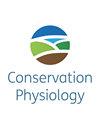Seasonal temperatures in South Eleuthera, The Bahamas, have considerable impacts on the cardiorespiratory function and swimming performance of Nassau grouper (Epinephelus striatus)
IF 2.5
3区 环境科学与生态学
Q2 BIODIVERSITY CONSERVATION
引用次数: 0
Abstract
Surprisingly, the impacts of environmental changes on the physiology of tropical/subtropical marine fishes have received limited attention. Given that (i) temperature is considered to be a key factor controlling the biology of fishes; (ii) no published data are available on the swimming performance, metabolic capacity or cardiac function of any of the ~165 grouper species worldwide; and (iii) the Nassau grouper is an endangered species of great ecological and socioeconomic significance in The Bahamas, we investigated how current summer/early fall (30°C) and winter (22°C) temperatures in South Eleuthera affected the aerobic metabolism and heart function of wild Nassau grouper when swum to exhaustion (i.e. to their critical swimming speed, Ucrit). The Nassau grouper had a very low Ucrit at 30°C (i.e. <1 body lengths s−1), and a 30% lower swimming performance during the winter (at 22°C), and this was that was indicative of a reduced absolute aerobic scope (~185 vs. 290 mg O2 kg−1 h−1) and values of maximum heart rate ($f$HMax) and scope for $f$H that were only one-half of that achieved at 30°C (~60 vs. 120 and 29 vs. 61 beats min−1, respectively). Overall, these data reveal that the Nassau grouper’s aerobic and swimming capacity are well below values reported for other tropical/subtropical fishes and suggest that, despite a compensatory (~30–40%) increase in stroke volume, constraints on $f$H near this species’ lower thermal limit negatively affect its cardiac output and swimming performance. These findings have considerable ecological implications as Bahamian grouper populations migrate over long distances to spawn during the winter months, and given the predicted increase in temperature variability with climate change.巴哈马南伊柳塞拉岛的季节性温度对拿骚石斑鱼(Epinephelus striatus)的心肺功能和游泳性能有很大影响
令人惊讶的是,环境变化对热带/亚热带海洋鱼类生理学的影响只得到了有限的关注。鉴于:(i) 温度被认为是控制鱼类生物学的关键因素;(ii) 全球约 165 种石斑鱼的游泳性能、新陈代谢能力或心脏功能均无公开数据;(iii) 拿骚石斑鱼是巴哈马群岛的濒危物种,具有重要的生态和社会经济意义,因此我们研究了南伊柳塞拉岛夏季/初秋(30°C)和冬季(22°C)的气温在野生拿骚石斑鱼游到精疲力竭时(即游到临界游泳速度、心率和呼吸频率)对其有氧代谢和心脏功能的影响。即达到临界游泳速度 Ucrit)时,野生拿骚石斑鱼的有氧代谢和心脏功能会受到影响。拿骚石斑鱼在摄氏 30 度时的临界游速很低(即<1 体长 s-1),而在冬季(摄氏 22 度时)的游动性能要低 30%,这表明其绝对有氧范围缩小(约为 185 对 290 毫克氧气 kg-1 h-1),最大心率值($f$HMax)和 $f$H范围仅为摄氏 30 度时的二分之一(分别为约 60 对 120 和 29 对 61 次心跳 min-1)。总之,这些数据表明,拿骚石斑鱼的有氧能力和游泳能力远低于其他热带/亚热带鱼类的报告值,并表明,尽管冲程量有补偿性(约30-40%)增加,但在该物种的热下限附近,对$f$H的限制会对其心输出量和游泳性能产生负面影响。由于巴哈马石斑鱼种群会在冬季长距离洄游产卵,而且随着气候变化,预计温度变化会加剧,因此这些发现对生态学具有重要意义。
本文章由计算机程序翻译,如有差异,请以英文原文为准。
求助全文
约1分钟内获得全文
求助全文
来源期刊

Conservation Physiology
Environmental Science-Management, Monitoring, Policy and Law
CiteScore
5.10
自引率
3.70%
发文量
71
审稿时长
11 weeks
期刊介绍:
Conservation Physiology is an online only, fully open access journal published on behalf of the Society for Experimental Biology.
Biodiversity across the globe faces a growing number of threats associated with human activities. Conservation Physiology will publish research on all taxa (microbes, plants and animals) focused on understanding and predicting how organisms, populations, ecosystems and natural resources respond to environmental change and stressors. Physiology is considered in the broadest possible terms to include functional and mechanistic responses at all scales. We also welcome research towards developing and refining strategies to rebuild populations, restore ecosystems, inform conservation policy, and manage living resources. We define conservation physiology broadly and encourage potential authors to contact the editorial team if they have any questions regarding the remit of the journal.
 求助内容:
求助内容: 应助结果提醒方式:
应助结果提醒方式:


